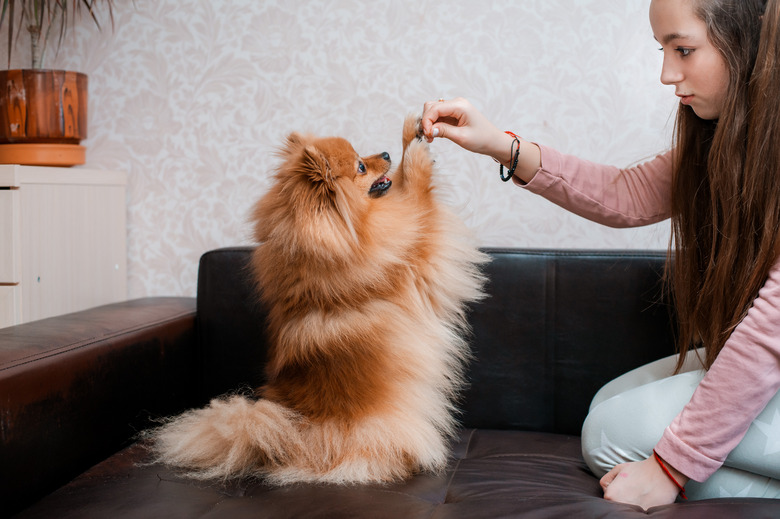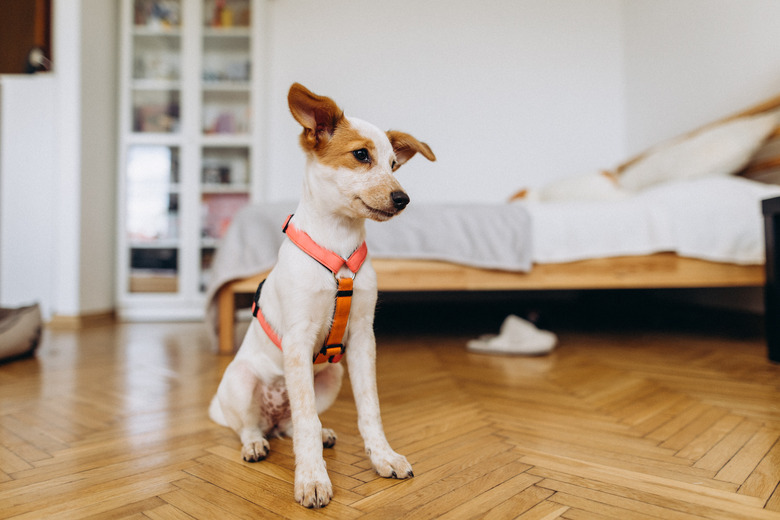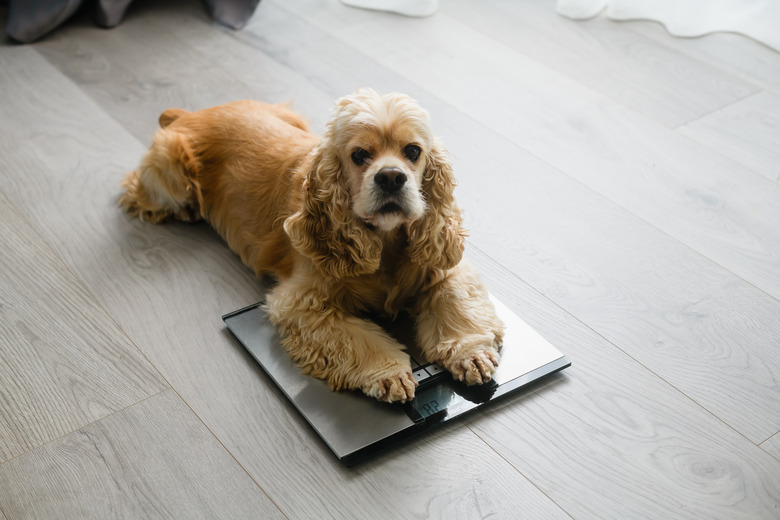Symptoms Of Pulled Muscles In Dogs
If your dog has a pulled leg muscle or a dog leg sprain, you will notice them limping or refusing to put weight on their leg. The leg, hip, or stifle (knee) might appear swollen and tender. If your dog has pulled a neck or back muscle, you'll see stiffness, instability while walking, changes in posture, and pain when touched or moved.
Dog leg sprain vs. muscle strain
Dog leg sprain vs. muscle strain
When your dog walks or runs, their muscles contract and relax, moving the tendons that connect the muscles and bones. Strains cause injury to the tendons. They're commonly seen in the hips and thighs. Ligaments, meanwhile, are strong, tough tissues that connect bone to bone.
Sprains injure ligaments; they are much more serious than strains. Sprains can cause damage to the joints. The carpal and stifle areas, or the dog's wrists and knees, are commonly affected by sprains. Both sprains and strains are considered soft-tissue injuries.
A common ligament that dogs tear in their stifle is the cranial cruciate ligament (CCL). This is the same ligament in the human knee that is frequently torn in athletes, called the anterior cruciate ligament, or ACL. The anatomical name is different in veterinary medicine merely because dogs stand on four legs, not two.
Symptoms of pulled muscles in dogs
Symptoms of pulled muscles in dogs
Leg sprains and strains can be caused by simple, everyday activities, such as running, jumping, and playing roughly. Symptoms include:
- Limping, sudden lameness, or stiffness
- Whining or being more vocal
- Refusing to eat
- Trouble standing up or sitting down
- Swelling around the affected muscle
- Bruising around areas that are swollen
- Posture changes, such as the back curving upward. Affected dogs might refuse to turn their head. They may appear wobbly and unstable while walking and might seem rigid in their neck.
Causes of pulled muscles in dogs
Causes of pulled muscles in dogs
There are several common causes of pulled muscles and torn ligaments in dogs:
- Being overweight puts pets at an increased risk for soft tissue injuries. The extra weight puts additional strain on muscles, tendons, and ligaments, making injury more likely. If your pet is overweight or obese, talk to your veterinarian about an appropriate diet and joint supplements. Being overweight can also cause earlier onset of hip dysplasia if your dog is genetically prone to it.
- Young, active dogs are likely candidates for injury since they enjoy rambunctious play. Canine athletes who participate in competitive sports, such as agility and racing, frequently suffer overuse injuries and injuries to ligaments like their cranial cruciate ligament.
- Hunting dogs can injure themselves while chasing prey.
- Working dogs can experience a traumatic injury while jumping up or down from high places.
Treatment options for soft tissue injuries in dogs
Treatment options for soft tissue injuries in dogs
Mild leg strains will heal on their own with adequate rest. If your dog does not stop limping after two days, let a veterinarian assess the injury. Your veterinarian will perform a physical exam to look for swelling and inflammation. They will observe your dog's gait, and they might take radiographs (X-rays) to ensure no bones are broken.
If your dog is in a lot of pain, it's possible they may need to be sedated for X-rays or for proper orthopedic testing. An orthopedic exam involves checking certain joint movements to ensure that important ligaments (like the CCL) or tendons aren't torn. When a pet is in pain, they tense up, which makes performing these tests difficult to do and difficult to interpret.
Treatment for a soft tissue injury usually consists of:
- Pain medication, like nonsteroidal anti-inflammatory drugs (NSAIDS) made specifically for dogs
- Lots of rest at home
- Cold packs to reduce swelling or hot packs to reduce pain
- Surgery to repair connective tissue. like a ruptured ligament or tendon, or if your pet has a muscle tear
- Physical therapy to help restore normal range of motion
Caring for your dog's injury
Caring for your dog's injury
To help the healing process, your veterinarian might recommend:
- Placing a hot pack or ice pack on the injury
- Physical therapy and massage
- Acupuncture from a certified veterinary acupuncturist
- Keeping your dog in a confined area
- Taking your pup outside on a leash to go to the bathroom to prevent further injury
- Avoiding stairs in your home, as climbing up and down stairs can prolong recovery time
- Waiting to allow your dog to resume their normal routine until the injury is completely healed
How to prevent pulled muscles in dogs
How to prevent pulled muscles in dogs
There isn't just one way to prevent a pulled muscle. Things you can do to reduce the chances of your dog pulling a muscle include:
- Having your dog warm up before rigorous exercise
- Getting to know your pet's limits for exercise. Don't have them do too much too soon.
- Maintaining a healthy weight
- Letting them have enough time to rest and recover after strenuous exercise
The bottom line
The bottom line
A muscle injury can cause symptoms like swelling at the injured area, limping, or suddenly being non-weight-bearing on one leg. If you notice any of these symptoms, your dog needs a physical examination by your veterinarian right away. It's possible they just have a muscle strain, or they could have more serious injuries, like a torn muscle or torn ligament.


